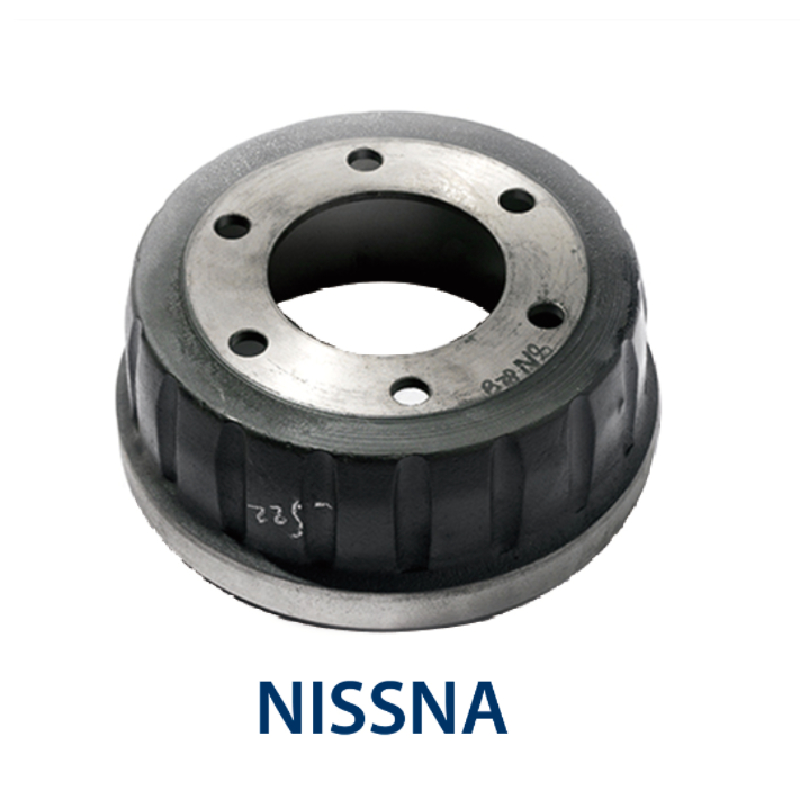Dec . 17, 2024 00:01 Back to list
heavy duty brake drums
Understanding Heavy Duty Brake Drums Essential Components for Safety and Performance
Heavy duty brake drums play a crucial role in the braking systems of large vehicles, such as trucks, buses, and trailers. These components are integral for ensuring the safety and reliability of heavy machinery as they are responsible for dissipating heat generated during braking, while also providing the necessary friction to stop the vehicle effectively. In this article, we will explore the importance, design, maintenance, and advancements in heavy duty brake drums.
Importance of Heavy Duty Brake Drums
Brake drums are typically made from cast iron due to its excellent thermal conductivity and wear resistance properties. In heavy-duty applications, these drums are engineered to withstand high levels of stress and heat generated during frequent and prolonged braking. They work in conjunction with brake shoes, which press against the inner surface of the drum to create friction. The effectiveness of this system is vital, as inadequate braking performance can lead to severe accidents, especially when transporting large loads.
The design of heavy duty brake drums is specifically tailored to manage the heat produced during braking. As trucks and heavy vehicles often operate under extreme conditions, including steep grades and high speeds, the capacity to dissipate heat quickly is essential to avoid brake fade—a condition where the brakes become less effective due to overheating.
Design Features
The design of heavy duty brake drums includes several key features that enhance their performance
1. Material Composition As mentioned, cast iron is the primary material used, but some advanced brake drums may incorporate composite materials for reduced weight and improved heat resistance.
2. Ventilation Many heavy duty brake drums are designed with ventilation slots or fins. These features promote airflow, allowing for better heat dissipation and reducing the risk of overheating.
3. Size and Weight The size of brake drums must be compatible with larger brake shoes to provide an adequate contact area, thereby enhancing the braking power required for heavy loads. Smaller vehicles may not require such robust systems, reflecting the scaling of brake drum design to vehicle needs.
4. Wear Indicators Some modern heavy duty brake drums come equipped with wear indicators that signal when the drum has worn down and needs replacement, which helps ensure safety and optimal performance.
heavy duty brake drums

Maintenance Considerations
Regular maintenance of heavy duty brake drums is essential for the safety and performance of any vehicle. Here are some key practices to ensure the longevity and effectiveness of these components
- Visual Inspections Regularly inspecting the drums for cracks, warping, or excessive wear can help identify issues before they escalate. Any signs of irregular wear patterns could indicate alignment issues or problems with the brake shoes.
- Cleaning Dirt, dust, and debris can accumulate inside brake drums over time, which can affect braking performance. Regular cleaning can prevent this buildup.
- Replacement Like all components, brake drums will eventually wear out and need replacement. Monitoring the wear and ensuring timely replacement is vital for maintaining brake efficiency.
- Professional Servicing Engaging professional mechanics for brake system evaluations ensures any hidden issues are addressed and that the components are correctly installed and adjusted.
Innovations in Brake Drum Technology
As technology progresses, the design and manufacturing of heavy duty brake drums evolve as well. One notable innovation is the development of lighter yet stronger materials that enhance the performance while reducing the overall weight of vehicle components. Additionally, advancements in manufacturing techniques lead to improved precision and consistency in brake drum production, further enhancing safety.
Another area of development is the integration of smart technology that monitors brake performance in real time. Sensors can provide data on temperature and braking force, allowing for proactive maintenance and reducing the risk of failure.
Conclusion
Heavy duty brake drums are indispensable for the safety and performance of large vehicles. Understanding their function, design, and maintenance will help operators ensure optimal operation and safety. As technology continues to advance, the future of heavy duty brake drums looks promising, potentially leading to even safer and more efficient braking systems for the ever-evolving landscape of transportation. Making informed decisions regarding the maintenance and replacement of these critical components not only extends their lifespan but ultimately protects lives on the road.
-
Brake Drum Man - High-Quality Drum Brake Drums & Brake Shoes for Reliable Performance
NewsJun.24,2025
-
High-Quality Brake Drum Kamaz – Durable Drum Brake Drum & Brake Shoe Replacement
NewsJun.10,2025
-
High-Quality Brake Drum Liza for Drum Brake Systems - Superior Durability and Performance
NewsJun.10,2025
-
High-Quality Brake Drum Kamaz – Durable Drum Brake Drum & Brake Shoe Solutions
NewsJun.10,2025
-
Durable Kamaz Brake Drums High-Performance Truck Parts
NewsJun.09,2025
-
Premium Brake Drum Maz Kit with Shoes Enhanced Braking
NewsJun.09,2025
